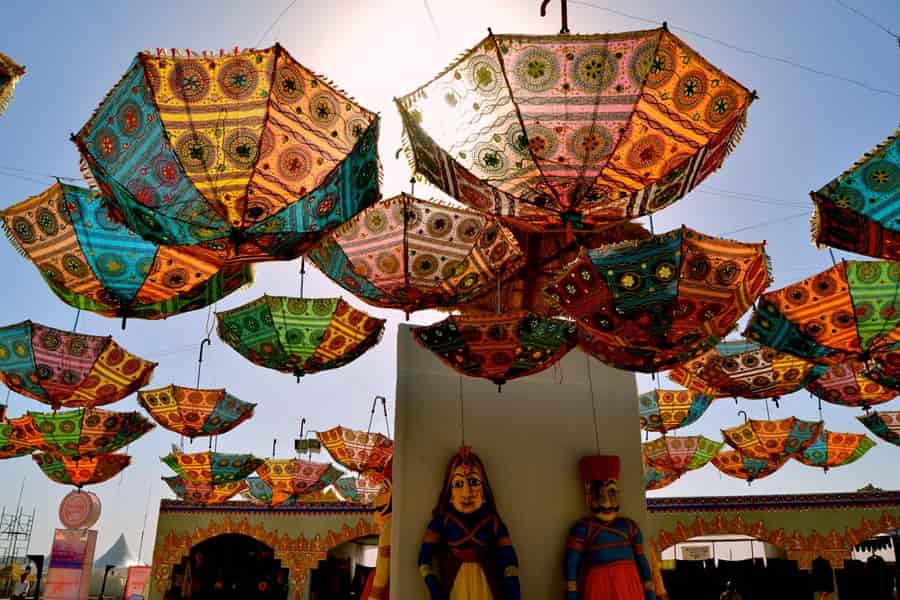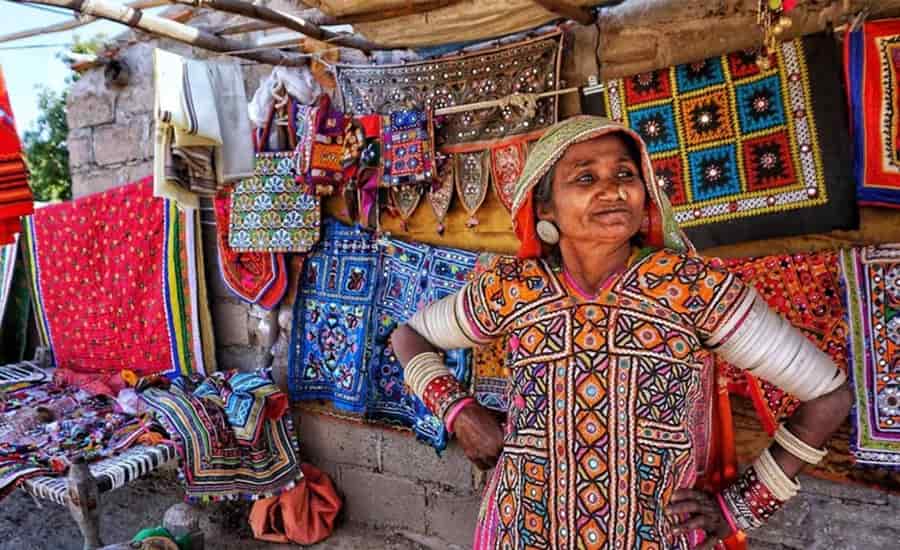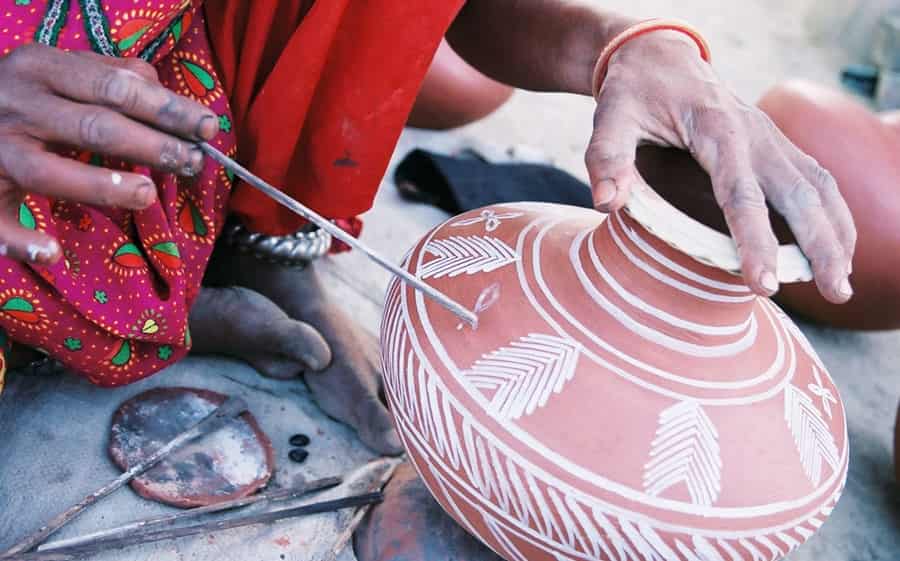The Rann of Kutch, a vast expanse of salt marshes and desert landscape in the Indian state of Gujarat, is not only a geographical wonder but also a treasure trove of diverse crafts and cultures. This region, with its unique topography and history, has given rise to a rich tapestry of artistic expressions, traditional practices, and vibrant communities. This exploration delves into the intricate crafts and cultures that thrive in the Rann of Kutch, offering a comprehensive view of the region’s distinctive identity.
Geographical and Historical Context
The Rann of Kutch is characterized by its salt flats, seasonal marshlands, and arid terrain, creating a surreal landscape that shifts dramatically with the changing seasons. Historically, the region has been home to various communities, each contributing to the cultural mosaic of Kutch. The influences of the Sindhu-Sarasvati civilization, the rich heritage of the Harappan era, and the migration patterns of different tribes have all played a role in shaping the unique identity of the Rann of Kutch.
Crafts
Embroidery and Mirror Work
One of the most distinctive crafts of Kutch is its exquisite embroidery and mirror work. Practiced by various communities, including the Jats, Harijans, Mutwa, Sodha, and Meghwal, this intricate art form involves embellishing fabrics with vibrant threads and small mirrors. The mirror work, in particular, reflects the region’s penchant for incorporating reflective surfaces, perhaps mirroring the sparkling salt flats of the Rann itself.
Kutchi Embroidery: The region is renowned for its exquisite hand-embroidered textiles, known as Kutchi embroidery. Skilled artisans create intricate patterns using vibrant threads, mirrors, and beads.
Rogan Art
Nirona Village in Kutch is renowned for Rogan Art, a rare form of cloth painting dating back over 400 years. Only one family, the Khatri family, continues to practice this ancient art with unparalleled expertise. Using castor oil as a base, vibrant colors are intricately worked into fabric, creating visually stunning and highly durable artworks.
Lacquer Woodwork
Nirona is also a hub for lacquer woodwork, showcasing the skill of local artisans in creating vibrant and glossy wooden artifacts. This traditional craft involves applying layers of lacquer, often in multiple colors, to wooden surfaces, resulting in eye-catching pieces that reflect the cultural vibrancy of Kutch.
Copper Bells and Leather Craft
Hodko Village, situated amidst the barren beauty of the Rann, is known for its copper bells, leather crafts, and claywork. The artisans here fashion exquisite copper bells with intricate designs, reflecting the raw and rich artistic traditions deeply rooted in the local culture.
Mud Architecture
Bhunga Houses: The traditional dwellings in the Rann of Kutch, known as Bhungas, are unique examples of mud architecture. These circular huts provide shelter from the harsh climate and are adorned with colorful decorations.
Tribal Markets
Bhuj Haat: Local markets, like Bhuj Haat, offer a wide array of traditional crafts, textiles, and artifacts. These markets are perfect for experiencing the authenticity of Kutchi craftsmanship.
Wooden Craftsmanship
Nirona Village: Known for its Rogan art (a form of fabric painting) and lacquer work, Nirona village is a hub of wooden craftsmanship. Skilled artisans create intricate pieces, including lacquerware and wooden utensils.
Traditional Attire and Jewelry
The clothing worn by the people of Kutch is a visual testament to the region’s cultural diversity. Villagers, inspired by the styles of Rajasthan and Sindh, don colorful attire. Jewelry, such as ‘Vadlo’ or ‘Mkoda Chakkar’ worn by Jat women, and ‘Akota,’ a nose ornament worn by Rabari women, further emphasize the cultural nuances embedded in the craft of adornment.

Cultures
Religious Festivals and Fairs
Kutch’s cultural calendar is punctuated with a myriad of religious festivals and fairs. The Navratri festival sees a grand fair in Mata’s Madh, attracting people from far and wide. Jakkha’s fair, known for its night-time singing and diverse participation, exemplifies the inclusive nature of cultural celebrations in the region.
Rann Utsav: The Rann Utsav is a vibrant festival celebrated in the region, attracting tourists from around the world. It showcases the diverse cultural heritage through traditional performances, handicrafts, and local cuisine.
- Also Read: Popular Fair and Festivals of Gujarat
Traditional Dances
Folk dances are an integral part of Kutch’s cultural heritage, passed down through generations. The famous Rann Utsav brings together local artistes and unique performers, including the Siddi community, who showcase tribal dances, leaving the audience captivated. These dances embody the rhythmic soul of Kutch’s diverse cultures.

Village Life and Reconstructed Communities
The earthquake of 2001 had a profound impact on the villages of Kutch. However, the resilience of the communities led to the reconstruction of villages like Gandhi Nu Gaam in the ‘Bhunga House’ style. This traditional village in Ludiya showcases not only local crafts but also stages engaging laser shows, offering a glimpse into the evolving dynamics of village life.
Diversity in Dressing Styles
The attire of the people of Kutch is not merely a matter of clothing; it is a reflection of their identity. From the traditional ‘Cheni’ worn with ‘Khes’ and ‘Abho’ to the distinctive headgear like ‘Paagh,’ the dressing styles resonate with the historical and cultural roots of the communities.
Tribal Communities
Rabaris and Ahirs: Nomadic pastoral communities like Rabaris and Ahirs are integral to the region’s culture. They have their own unique customs, attire, and crafts, including distinctive jewelry and clothing.
Cultural Village
Hodka Village: Situated in the Rann of Kutch, Hodka is a cultural village that offers visitors a glimpse into the local way of life. It showcases traditional architecture, handicrafts, and folk performances, providing an immersive experience of Kutchi culture.
Cuisine
Kutchi Cuisine: The local cuisine reflects the arid landscape, with dishes like Kutchi Dabeli and Khichdi being popular. The use of locally available ingredients is a hallmark of Kutchi cooking.
Conclusion
The Rann of Kutch stands as a living testament to the harmonious coexistence of diverse crafts and cultures. From the vibrant stitches of embroidery to the rhythmic beats of folk dances, every aspect of life in Kutch reflects a deep connection to its geographical and historical roots. The crafts and cultures of the Rann of Kutch not only contribute to the visual richness of the region but also serve as a mirror reflecting the resilience, creativity, and cultural wealth of its people. Exploring these facets provides a profound understanding of how the crafts and cultures of the Rann of Kutch continue to thrive and evolve in this unique corner of the world.
Popular Tour Packages

